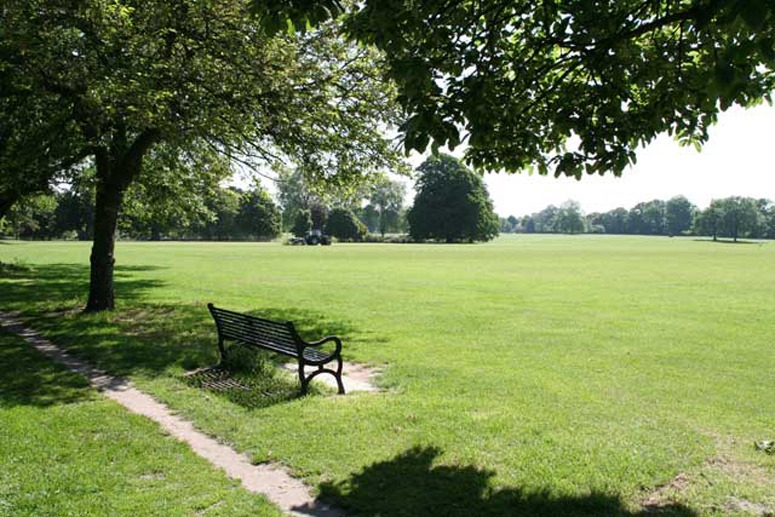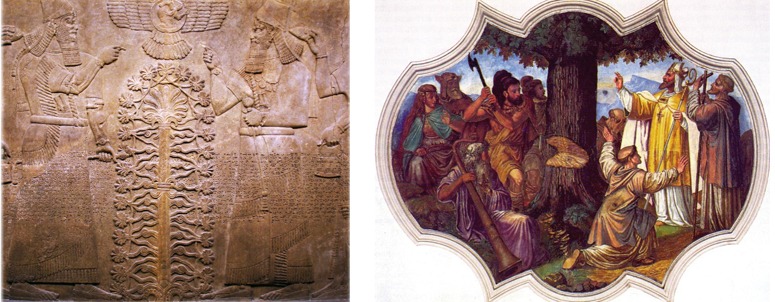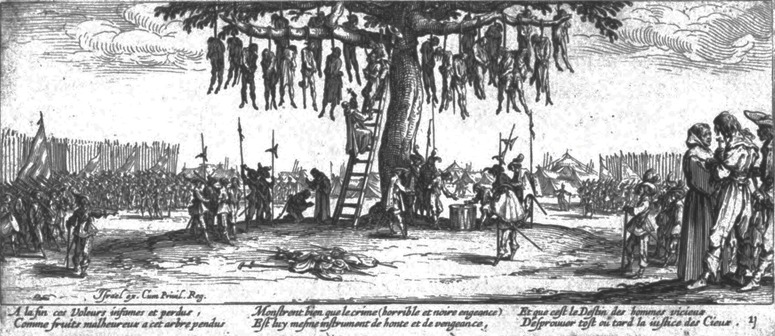 London has had many economic roles over the centuries and now hopes to settle down as a cultural capital and somewhere between ‘Europe’s financial centre’ and ‘the world’s financial centre’. This requires a planning and design response which is likely to include
London has had many economic roles over the centuries and now hopes to settle down as a cultural capital and somewhere between ‘Europe’s financial centre’ and ‘the world’s financial centre’. This requires a planning and design response which is likely to include
(1) more large green buildings, because big firms have big space requirements
(2) more homes for young, rich and mobile people
(3) more urban public space of the highest quality and greatest variety: busy and quiet, large and small, glazed and unglazed, soft and hard, wild and cultured, space at ground level, above ground and below ground, space for shopping and space for prayer, space with quiet water, bright water, dark water, swimming water, boating water and living water, biodiversity, socially diverse space for each cultural group (listeners to Radios 1,2,3,4,5,6,7 etc) and social space for the particular interests of ethnic, work and leisure groups.
London’s new amenities could be provided on a spatterdash basis – or London could have an urban landscape plan. The Canary Wharf development on the Isle of Dogs was a key project. It points to what should be done, to how it should be done – and to where it should be done. London’s traditional rival is Paris, which has a bold plan, now over 300 years old, for projecting the axis of the Tuileries westward – to the Place de la Concorde, to the Arc de Triomphe, to La Défense and beyond. London has a modest plan for projecting Crossrail into the Thames Gateway. But London landscape planning lacks spatial imagination – and axes were a baroque idea.
London will require many new buildings. They should be of the best available quality – and they should be grouped to ‘define and contain’ new urban space of the best quality and variety. The urban space should be designed before the buildings. A great new urban landscape should be planned to run east from the Isle of Dogs. Olympia and York made a significant start when they commissioned Laurie Olin to plan Westferry Circus and the Canary Wharf central axis. Before this, the Isle of Dogs was being developed with small cheap buildings and a pitiful lack of long-term vision. The Hanna Olin plan was much better – but it was more of a plan for Visual Space than for Social Space or Ecological Space. The present period of relative economic stagnation is an opportunity to take a broad perspective on the eastward projection of London and its financial future. There should be a 3-year plan, a 30-year plan and a 300-year plan.
London should remember that ‘He that the beautiful and useful blends, Simplicity with greatness, gains all ends’. Urban designers, architects and landscape architects should plan a multi-functional urban landscape with the highest visual quality and as much sustainability as can be planned at this point in time, with conceptual principles prioritised over design deails.
Category Archives: landscape planning
Has London gotta lotta bottle? – or too many garks?

The Urban Dictionary gives these meanings for ‘bottle’:
1)Transparent Container, usually for liquids that is narrow, circular-based, mostly handle-less and with an ever-narrowing top, where the opening is found.
2) To hit someone on the head with a glass bottle, smashing the bottle in the process.
3) Guts or determination
4) Female with no volouptous features, in comparison to 1)
So ‘Yes’ for its urban space. But ‘No’ for its many garks.
The Easter Island Path to Perdition could show where humanity is heading
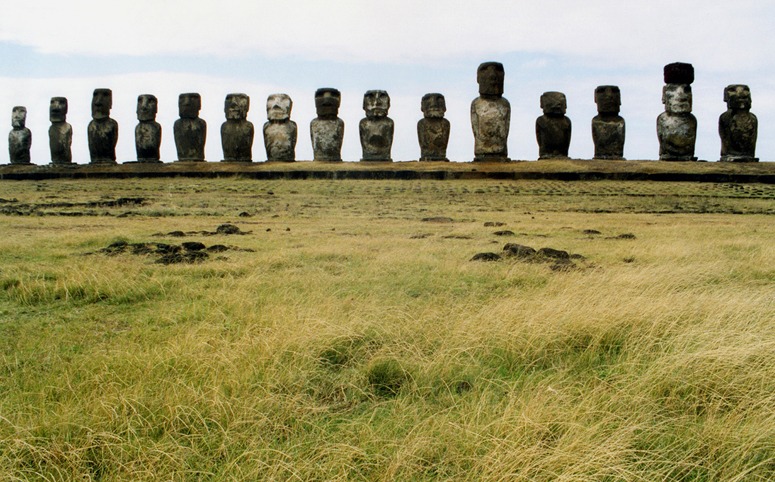 Following the below comments on Attitudes to life, death and trees in western culture and ‘civilization’, I thank Anoldent, for his photograph and his account of the Fifteen Moai on Easter Island: ‘Moai were status symbols. The more you had and the bigger they were, the greater your village’s status. Unfortunately, moving them around the island required many trees, and when the last trees were cut on the once heavily forested island, the topsoil blew away, the islanders could no longer build fishing boats, or even escape the ensuing famine. Wars erupted and the culture collapsed. An environmental cautionary tale. The island is still largely treeless.’ On a larger scale, too many humans think this way: ‘the more you have the better you are’: more rooms, more people, more buildings, more cars, more economic growth. But for humans who inhabit an island or a planet, aiming for more may result in less. Let’s call it ‘the Easter Island Path to Perdition’, and let’s be sufficiently optimistic to believe that the ‘civilization’ of cities will be replaced by a sophisticated landscape urbanism.
Following the below comments on Attitudes to life, death and trees in western culture and ‘civilization’, I thank Anoldent, for his photograph and his account of the Fifteen Moai on Easter Island: ‘Moai were status symbols. The more you had and the bigger they were, the greater your village’s status. Unfortunately, moving them around the island required many trees, and when the last trees were cut on the once heavily forested island, the topsoil blew away, the islanders could no longer build fishing boats, or even escape the ensuing famine. Wars erupted and the culture collapsed. An environmental cautionary tale. The island is still largely treeless.’ On a larger scale, too many humans think this way: ‘the more you have the better you are’: more rooms, more people, more buildings, more cars, more economic growth. But for humans who inhabit an island or a planet, aiming for more may result in less. Let’s call it ‘the Easter Island Path to Perdition’, and let’s be sufficiently optimistic to believe that the ‘civilization’ of cities will be replaced by a sophisticated landscape urbanism.
Attitudes to life, death and trees in western culture and 'civilization'
The illustrations show a Tree of Life (above left) in ancient West Asia, the felling of a Sacred Tree by St Boniface (Thor’s Oak, above right) and a Hanging Tree during the 30 Years War (below).
What do the illustrations tell us about changing attitudes to trees in western civilization? Here are some possibilities:
- the ancients saw trees (and forests) as symbols of the natural forces which control the world
- the early Church regarded tree-worship as idolatrous, because there is only one true God
- both trees and people were destroyed in the religious wars of the seventeenth century
In clearing and ‘managing’ what is left of the world’s forest cover we may be marching in the path of the Easter Islanders. At present, the most densely wooded countries are Finland (86% of the total land area), Sweden (57%) and Austria (47% ). Australia, suprisingly, has 20.1% forest cover. The European countries with the least forest are Ireland, with 8% of the land as forested and the United Kingdom with 11%.
How green is my garage?
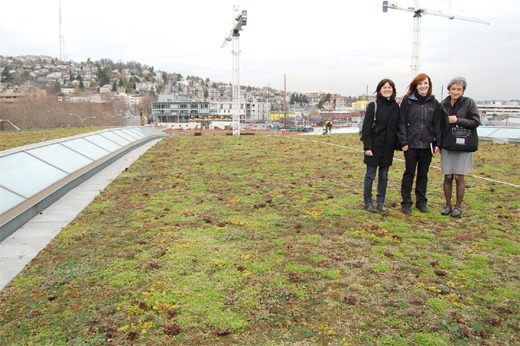 Bill Gates is famous not only for revolutionising communications but also for being the proud owner of the largest green roof garage in Seattle.
Bill Gates is famous not only for revolutionising communications but also for being the proud owner of the largest green roof garage in Seattle.
Maserati recently ran a garage design competition…and entries included not only green garages…but an insanely cool garage that is everything about setting and concept (if just a little light on resolution).
The winning entry shown on this youtube clip is car as ‘art’ and perhaps might be a useful way of thinking ‘green garage’ for Lace Hill.
Batchelor Life in the Green Age
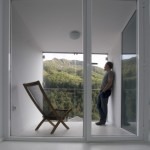 So what are the essentials of life for the modern batchelor in the Green Age? Is a good view to a natural setting a pre-requisite for happiness in habitation? Should he be provided with a balcony so that he can commune with the outdoors while still ensounced in his pad? Or does the modern batchelor still insist on his own patch of dirt? Perhaps a fast or all terrain vehicle would satisfy a desire to experience the outdoors…afterall what are weekends for?
So what are the essentials of life for the modern batchelor in the Green Age? Is a good view to a natural setting a pre-requisite for happiness in habitation? Should he be provided with a balcony so that he can commune with the outdoors while still ensounced in his pad? Or does the modern batchelor still insist on his own patch of dirt? Perhaps a fast or all terrain vehicle would satisfy a desire to experience the outdoors…afterall what are weekends for?
Or in the Green Age has the batchelor become a totally urbanised creature? Is access to a good coffee shop, a waterfront promenade and urban night life the essential accessory for a good life?

